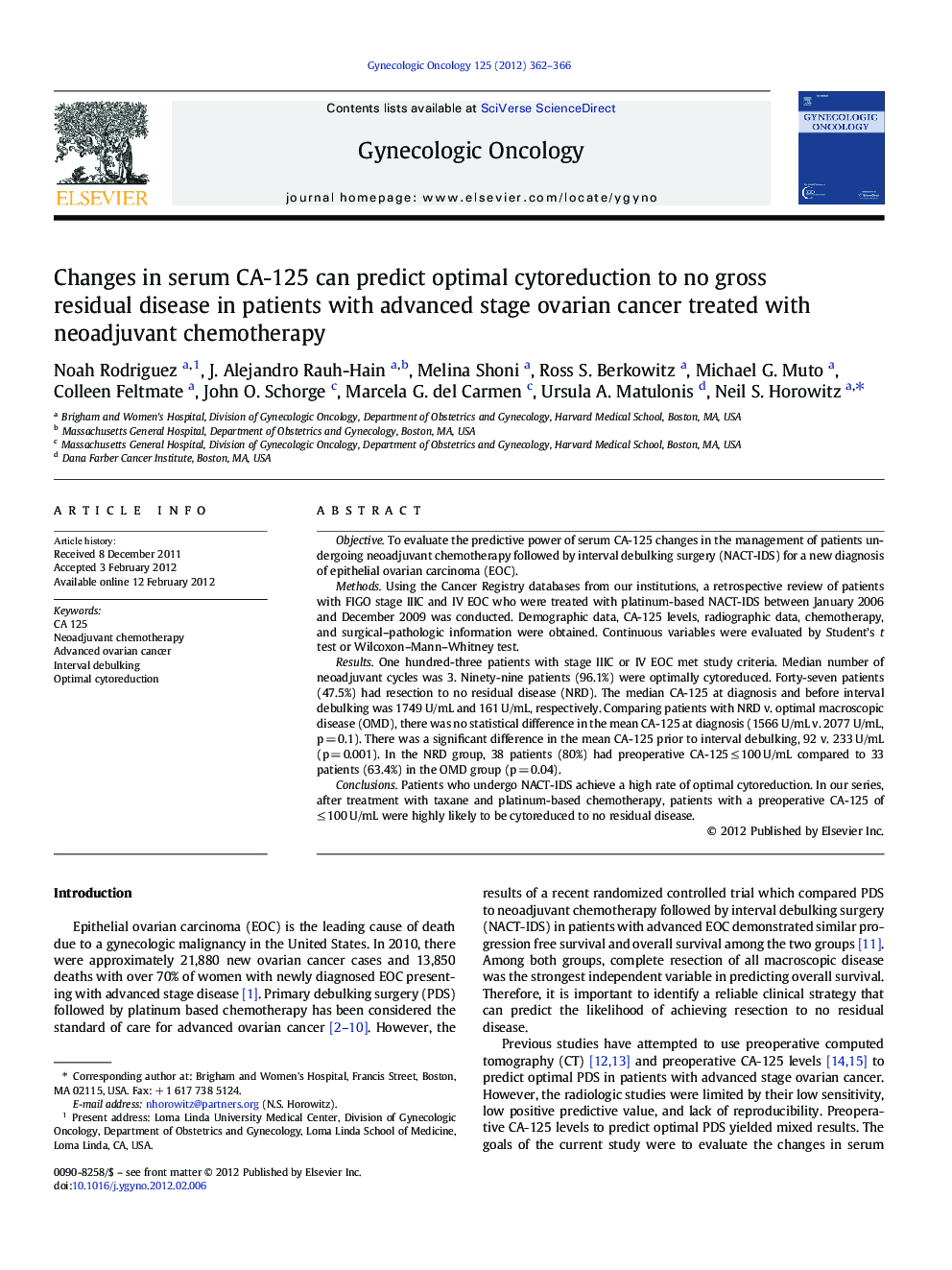| Article ID | Journal | Published Year | Pages | File Type |
|---|---|---|---|---|
| 3945143 | Gynecologic Oncology | 2012 | 5 Pages |
ObjectiveTo evaluate the predictive power of serum CA-125 changes in the management of patients undergoing neoadjuvant chemotherapy followed by interval debulking surgery (NACT-IDS) for a new diagnosis of epithelial ovarian carcinoma (EOC).MethodsUsing the Cancer Registry databases from our institutions, a retrospective review of patients with FIGO stage IIIC and IV EOC who were treated with platinum-based NACT-IDS between January 2006 and December 2009 was conducted. Demographic data, CA-125 levels, radiographic data, chemotherapy, and surgical–pathologic information were obtained. Continuous variables were evaluated by Student's t test or Wilcoxon–Mann–Whitney test.ResultsOne hundred-three patients with stage IIIC or IV EOC met study criteria. Median number of neoadjuvant cycles was 3. Ninety-nine patients (96.1%) were optimally cytoreduced. Forty-seven patients (47.5%) had resection to no residual disease (NRD). The median CA-125 at diagnosis and before interval debulking was 1749 U/mL and 161 U/mL, respectively. Comparing patients with NRD v. optimal macroscopic disease (OMD), there was no statistical difference in the mean CA-125 at diagnosis (1566 U/mL v. 2077 U/mL, p = 0.1). There was a significant difference in the mean CA-125 prior to interval debulking, 92 v. 233 U/mL (p = 0.001). In the NRD group, 38 patients (80%) had preoperative CA-125 ≤ 100 U/mL compared to 33 patients (63.4%) in the OMD group (p = 0.04).ConclusionsPatients who undergo NACT-IDS achieve a high rate of optimal cytoreduction. In our series, after treatment with taxane and platinum-based chemotherapy, patients with a preoperative CA-125 of ≤ 100 U/mL were highly likely to be cytoreduced to no residual disease.
► Patients with advanced ovarian cancer treated with neoadjuvant chemotherapy have high rates of optimal cytoreduction. ► Preoperative CA-125 < 100 may indicate a high probability of debulking to no gross residual disease. ► A drop of > 80% in CA-125 during neoadjuvant treatment may suggest platinum sensitive disease.
